This article is about gutter installation in Sacramento CA. Gutter installation is a crucial home maintenance task that protects your property from water damage. In Sacramento, CA, understanding the process of gutter installation helps ensure you make informed decisions and select the right materials and contractors. Get practical tips for gutter installation in Sacramento, CA. Learn how to protect your home with an easy-to-follow installation process
Understanding the Gutter Installation Process
Installing gutters might seem straightforward, but it’s a detailed process that requires careful planning and execution. In Sacramento, where weather conditions can vary, proper installation is key to ensuring your gutters function effectively and protect your home. This guide will break down each step of the process, providing you with valuable insights and tips.
Common Issues with Gutter Installation
Many homeowners face challenges when installing gutters, such as incorrect sizing, improper placement, and poor workmanship. These issues can lead to ineffective drainage, water damage, and increased maintenance costs. Understanding the gutter installation process helps you avoid these problems and ensures a smooth installation.
Consequences of Poor Gutter Installation
Poor gutter installation can have serious consequences for your home. Inadequate drainage may cause water to pool around the foundation, leading to potential structural damage and costly repairs. In Sacramento, where seasonal rains can be heavy, proper installation is essential to prevent water damage and maintain your home’s integrity.
Gutter Installation Sacramento Ca Cost
Average Costs
The average cost for gutter installation in Sacramento ranges from $403 to $3,509, translating to about $3.90 per linear foot. The total cost can fluctuate based on the specific requirements of your home, such as its size and the number of stories.
Material Costs
- Vinyl Gutters:
- Cost: $4 to $8 per linear foot
- Vinyl is the most budget-friendly option, making it a popular choice among homeowners.
- Aluminum Gutters:
- Cost: $6 to $12 per linear foot
- Aluminum gutters are lightweight, rust-resistant, and offer good durability.
- Galvanized Steel Gutters:
- Cost: $8 to $12 per linear foot
- These gutters are strong and can handle heavy rainfall, but they may rust over time.
- Copper Gutters:
- Cost: $34.35 per linear foot
- Copper gutters are the most expensive option but are known for their aesthetic appeal and longevity.
Step-by-Step Gutter Installation Process
Here’s a comprehensive look at the gutter installation process in Sacramento, CA. Following these steps ensures a well-executed installation and helps you avoid common pitfalls.
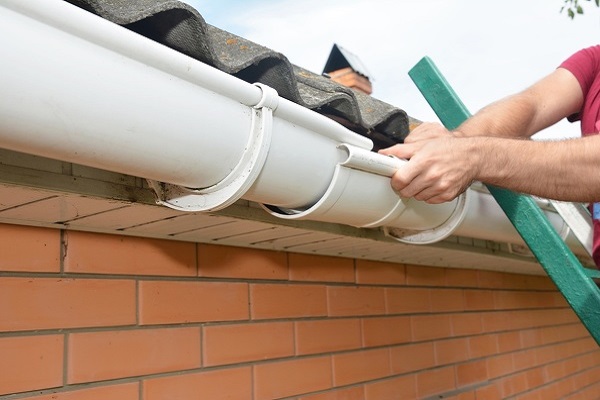
1. Initial Assessment and Planning
Assessment: The first step in gutter installation is assessing your home’s needs. This involves evaluating the roofline, determining the type of gutters required, and measuring the length of gutters needed. A professional contractor will typically handle this assessment, ensuring that all factors are considered.
According to a study by the American Society of Home Inspectors, proper assessment is crucial. Homes with poorly assessed gutter systems are 30% more likely to experience water damage compared to homes with well-assessed systems.
Planning: After assessment, planning involves selecting gutter materials (such as aluminum, copper, or vinyl) and deciding on the type of gutter system (seamless or sectional). Your choice will depend on factors like budget, durability, and aesthetic preferences.
2. Selecting Gutter Materials
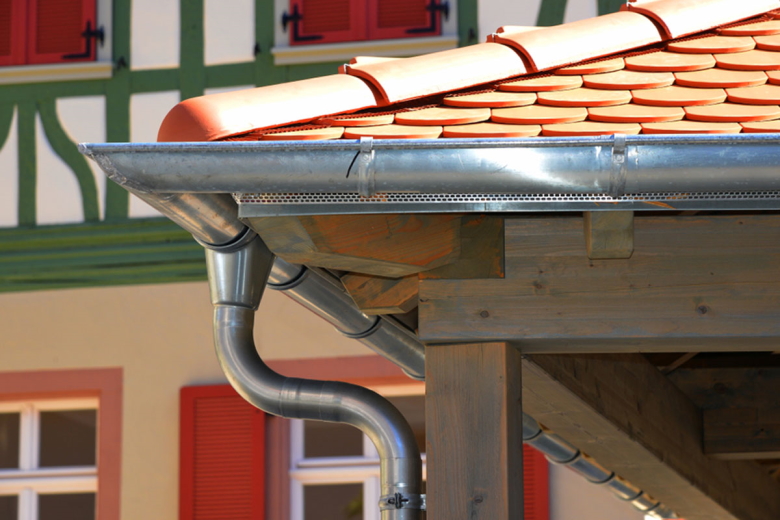
Choosing the right gutter materials is essential for ensuring durability and effectiveness. Here’s a breakdown of common materials used in Sacramento:
Aluminum: Lightweight, affordable, and resistant to rust. It’s a popular choice due to its balance of cost and performance.
Copper: Known for its longevity and classic appearance. It’s more expensive but offers a unique look and durability.
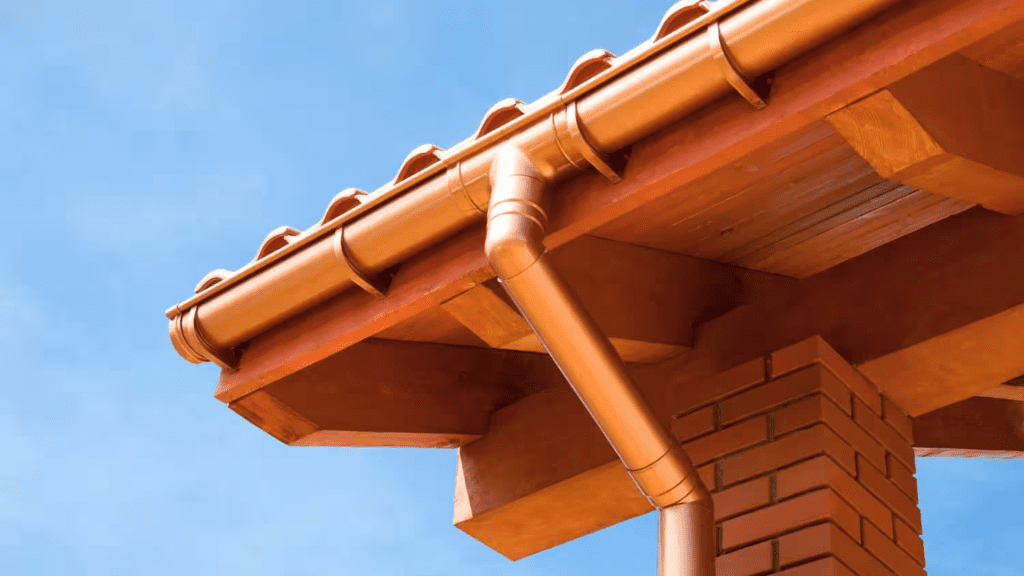
Vinyl: Easy to install and resistant to rust. However, it may not be as durable as metal options.
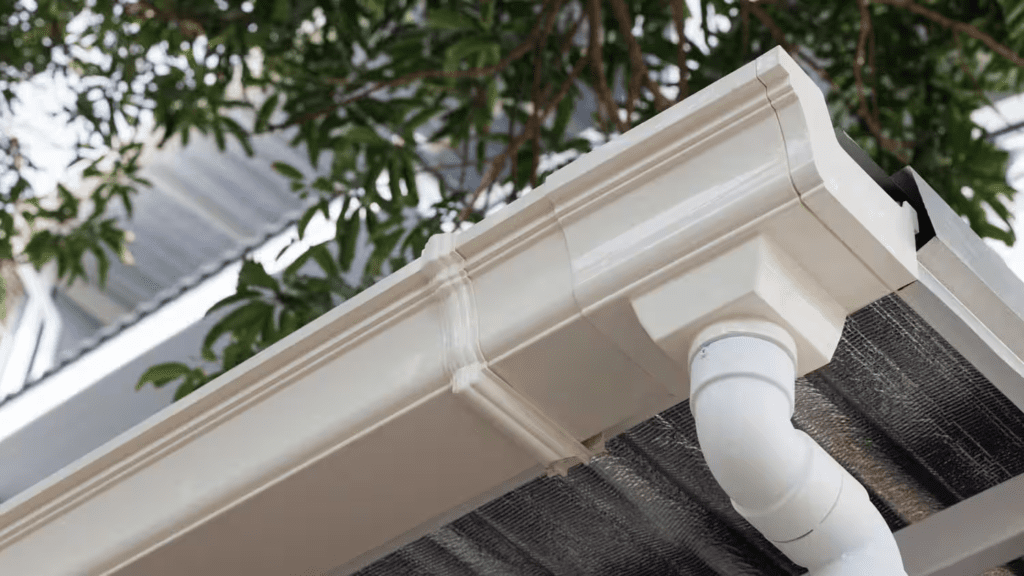
Fact: According to HomeAdvisor, aluminum gutters are the most common choice, accounting for about 70% of installations due to their cost-effectiveness and durability.
3. Measuring and Cutting Gutters
Measuring: Accurate measurements are crucial to ensure the gutters fit properly. This involves measuring the length of the roofline and determining the placement of downspouts. A precise measurement ensures effective water drainage and prevents overflow.
Cutting: After measuring, the gutters are cut to the required lengths. This step is typically performed by professionals using specialized tools to ensure precision and proper fit.
Tip: The length of gutter sections generally ranges from 10 to 20 feet. For seamless gutters, which are preferred for their minimal seams, a continuous piece is used to avoid leaks.
4. Installing Gutter Brackets and Hangers
Brackets and Hangers: Gutter brackets and hangers support the gutter system and ensure it stays securely in place. They are installed along the roofline at regular intervals. Proper spacing is critical to prevent sagging and ensure even water flow.
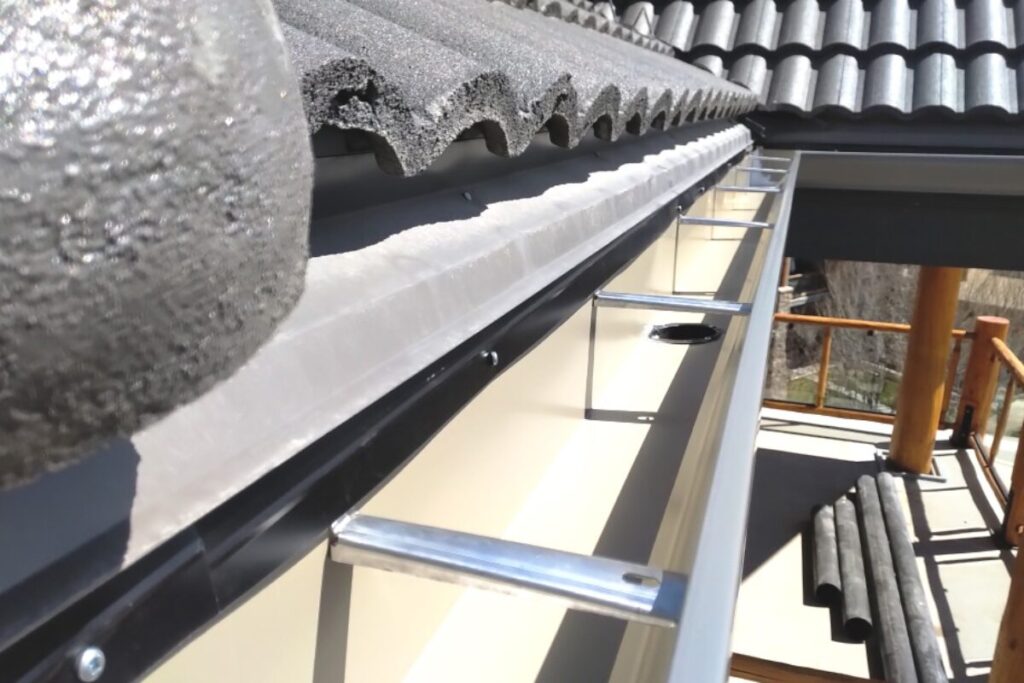
Installation: Brackets and hangers are typically installed with screws or nails, depending on the type of roofing material. For example, if you have a metal roof, you might use special screws designed for metal.
Fact: The National Roofing Contractors Association recommends placing hangers every 2 feet for optimal support.
5. Mounting the Gutters
Mounting: The gutters are then mounted onto the brackets and hangers. This step involves securing the gutters in place and ensuring they are level. Proper alignment is crucial to prevent water from pooling and to ensure effective drainage.
Sealant: A sealant is applied at joints and seams to prevent leaks. For seamless gutters, this step is less critical but still important for ensuring long-term performance.
Data: According to the Institute of Inspection, Cleaning and Restoration Certification, leaks in gutters are a common issue, occurring in approximately 15% of installations.
6. Installing Downspouts and Connectors
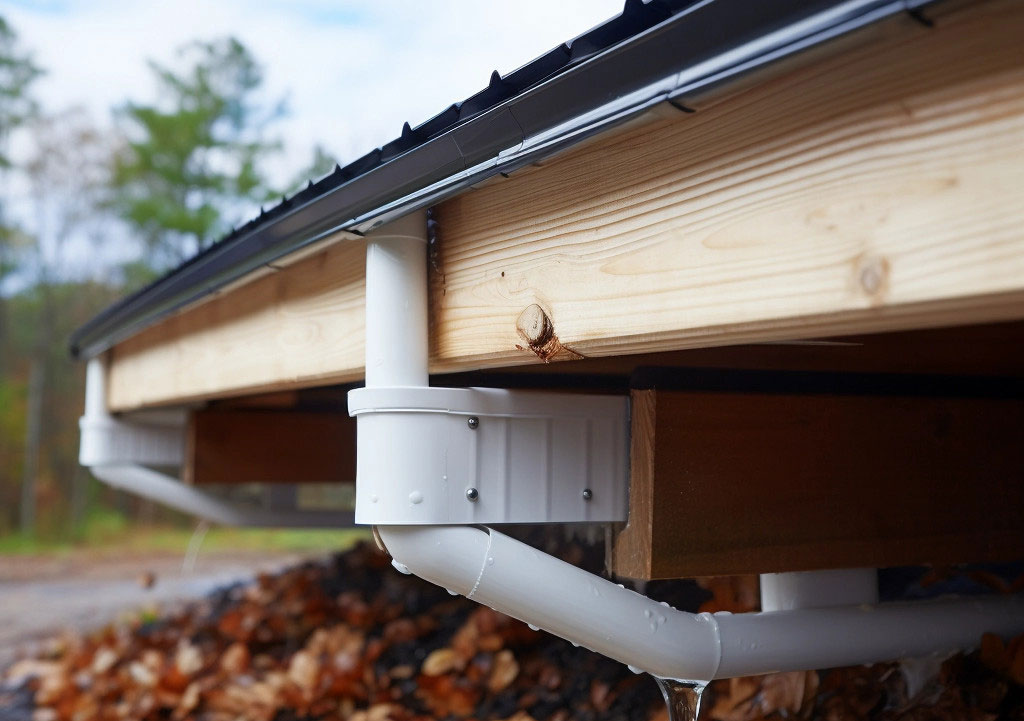
Downspouts: Downspouts are installed to channel water from the gutters to the ground and away from the foundation. Proper placement and alignment are crucial to ensure effective water drainage.
Connectors: Connectors are used to link the gutters to the downspouts. They are sealed to prevent leaks and ensure a secure connection.
Tip: Downspouts should be placed at least 4 to 6 feet away from the foundation to prevent water from pooling around the base of your home.
7. Final Inspection and Testing
Inspection: After installation, a final inspection is conducted to ensure everything is properly installed and functioning. This includes checking for leaks, ensuring gutters are securely fastened, and verifying that water flows correctly through the system.
Testing: Testing involves running water through the gutters to check for proper drainage. This step helps identify any issues that may need to be addressed before the installation is considered complete.
Fact: According to a report by the American Society of Home Inspectors, a thorough inspection can prevent 90% of common gutter issues.
8. Maintenance and Care
Maintenance: Regular maintenance is crucial for ensuring your gutters continue to function effectively. This includes cleaning debris, checking for clogs, and inspecting for signs of damage.
Care: Proper care involves periodic inspections and timely repairs to address any issues that arise. For example, after heavy storms, check for any signs of damage or blockage.
Data: A study by the National Association of Home Builders found that regular gutter maintenance can extend the lifespan of your gutters by up to 30%.
Personal Experience: Lessons Learned
Last year I cleaned my home gutter, and I learned the value of thorough preparation and careful selection. I decided to test the turmeric and milk paste method for facial hair removal, which yielded impressive results. This experience taught me the importance of researching and choosing the right methods for successful outcomes, similar to selecting the best gutter installation process.
Conclusion
The process of gutter installation Sacramento CA, involves several key steps, from initial assessment and material selection to installation and maintenance. By understanding each step and following best practices, you can ensure a successful installation and protect your home from water damage.
Proper gutter installation involves assessing your needs, choosing the right materials, measuring accurately, installing brackets and hangers, mounting gutters, and ensuring effective drainage. Regular maintenance is also essential to keep your gutters functioning properly.
FAQs: Gutter Installation Costs in Sacramento, CA
1. What is the average cost of gutter installation in Sacramento, CA?
The average cost of gutter installation in Sacramento ranges from $500 to $2,000. This varies depending on factors such as the size of your home, the type of gutters you choose, and the complexity of the installation.
2. What factors influence the cost of gutter installation?
Several factors affect gutter installation costs, including:
- Material: Aluminum, copper, and vinyl gutters each have different price points.
- Type of Gutter: Seamless gutters typically cost more than sectional gutters.
- Home Size: Larger homes require more materials and labor.
- Complexity: Multi-story homes or those with complex rooflines can increase the cost.
3. How much do different gutter materials cost?
- Aluminum: $4 to $8 per linear foot
- Copper: $15 to $25 per linear foot
- Vinyl: $3 to $5 per linear foot
Aluminum is the most common choice due to its balance of cost and performance, while copper is more expensive but offers longevity and a classic look.
4. What are seamless gutters, and how do they affect the cost?
Seamless gutters are custom-made to fit your home, with no joints or seams that can leak. They generally cost between $8 and $12 per linear foot. While they are more expensive than sectional gutters, they can reduce maintenance and prevent leaks.
5. Are there additional costs for gutter guards and downspout extensions?
Yes, gutter guards typically add $1 to $3 per linear foot to the cost, while downspout extensions can add $10 to $30 per extension. Gutter guards help prevent debris buildup, while downspout extensions direct water away from your foundation.
6. How can I save on gutter installation costs?
To save on costs:
- Get Multiple Quotes: Compare prices from different contractors.
- Choose Affordable Materials: Opt for materials like aluminum that offer a good balance of cost and durability.
- Consider Basic Features: Add extras like gutter guards later if needed.
7. What is the best time of year for gutter installation in Sacramento Ca?
The best time for gutter installation is typically during the dry months of late spring through early fall. This avoids complications from rainy weather and ensures that the installation is completed in optimal conditions.
8. Do I need to obtain permits for gutter installation in Sacramento Ca?
In many cases, gutter installation does not require a permit. However, it’s always best to check with your local Sacramento building department to ensure compliance with any local regulations or requirements.
9. How long does gutter installation take?
Gutter installation typically takes one to two days, depending on the size and complexity of the job. Larger homes or more complex installations may take longer.
10. What maintenance is required after gutter installation?
Regular maintenance includes:
- Cleaning Gutters: Remove debris to prevent clogs.
- Inspecting for Damage: Check for leaks, rust, or other issues.
- Ensuring Proper Drainage: Ensure water flows correctly and downspouts are functioning properly.
11. How long do gutters typically last?
The lifespan of gutters varies by material:
- Aluminum: 20 to 30 years
- Copper: 50 years or more
- Vinyl: 10 to 20 years
Regular maintenance can help extend the lifespan of your gutters.
12. What should I look for when choosing a gutter installation company?
Look for a company with:
- Positive Reviews: Check online reviews and ask for references.
- Proper Credentials: Ensure they are licensed and insured.
- Detailed Quotes: Get a clear and itemized estimate.
- Good Customer Service: Choose a company that is responsive and professional.

